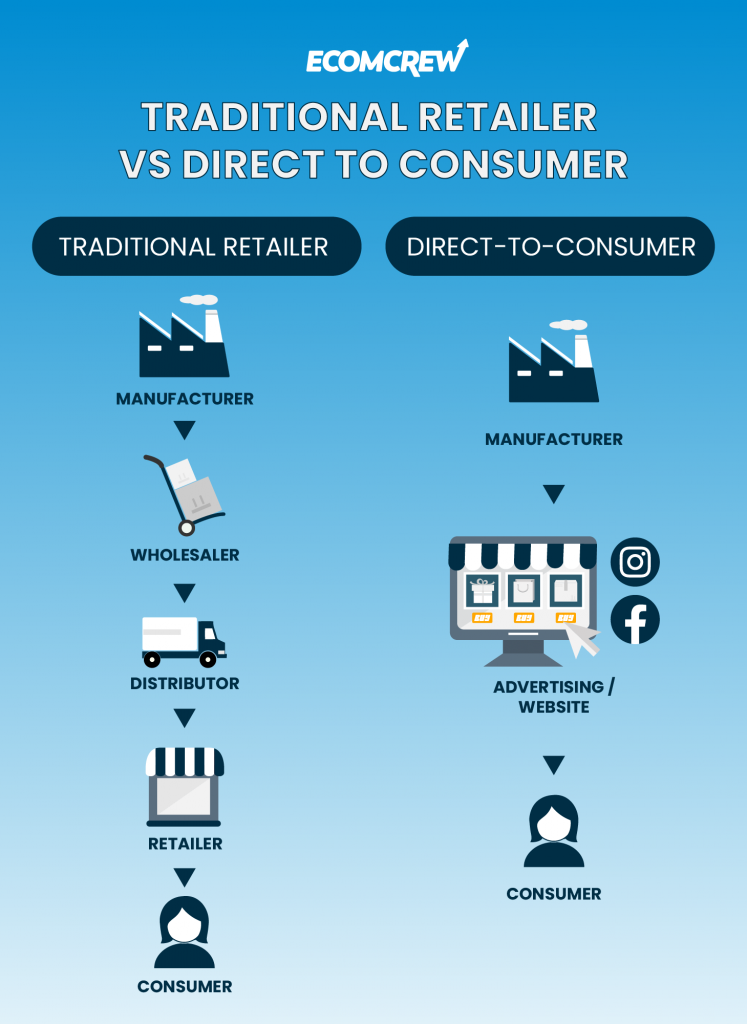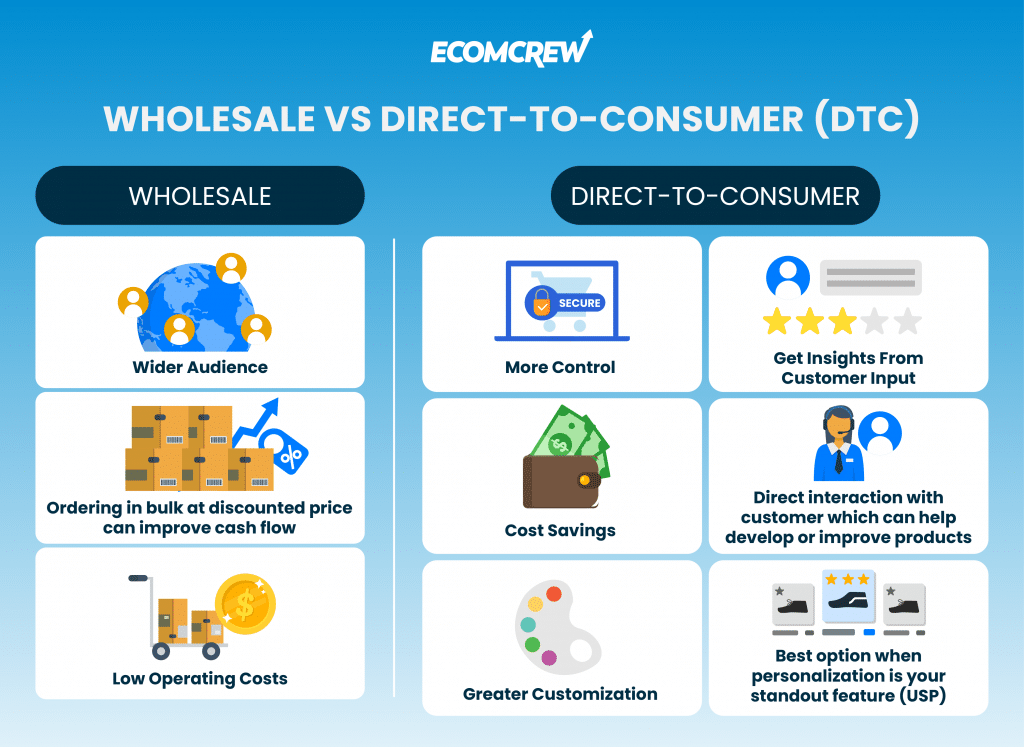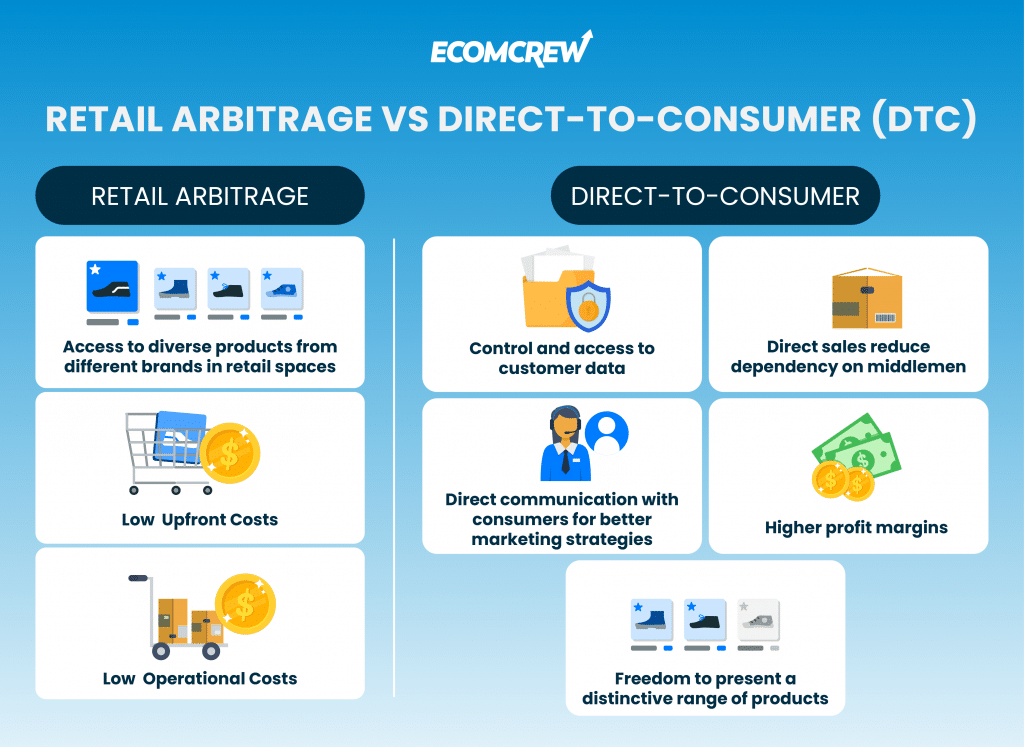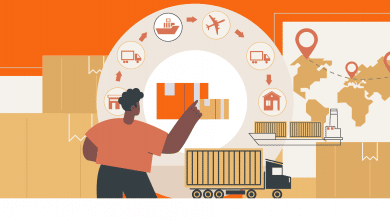A Comprensive Guide to Direct-to-Consumer (DTC) Brands in 2025

The surge of online shopping hasn't just unlocked opportunities on platforms like Amazon or Walmart; it has also paved the path for a new sales model—directly to the consumer.
In this article, we break down what we know about DTC brands, compare them with alternative sales models like wholesale or retail arbitrage, and explore the advantages and disadvantages of owning one.
Related Article: Top 50 DTC Canadian Brands To Track
What Are DTC Brands (Direct-To-Consumer)?
Exploring the DTC brands meaning provides insights into how businesses have transformed the traditional product distribution model, highlighting direct relationships with consumers.
Direct-to-consumer (DTC) is when a brand or maker sells products directly to customers, skipping the middlemen like retailers or wholesalers. In this retail model, DTC Brands take care of various aspects such as
- Managing product stock levels
- Handling order fulfillment processes (including sorting, packaging and shipping
- And communicating directly to customers
DTC brands can establish direct relationships with consumers and get valuable insights into their preferences and behavior by not relying on intermediaries.
Additionally, direct-to-consumer brands manage every customer interaction, transiting from marketing to delivery, and have remarkable similarities that empower D2C brands:
- Engage customers through purposeful marketing efforts.
- Provide customers with distinctive, high-quality products.
- Demonstrate the capability to turn “add to cart” into “proceed to checkout.”
- Adapt and grow in alignment with customer preferences.
Check out these examples of direct-to-consumer brands making waves in the Canadian scene: Top 50 DTC Canadian Brands To Track
Direct-to-Consumer (DTC) Landscape: Established Brands vs. Digitally Native Brands
Both established brands and digitally native brands can adopt direct-to-consumer (DTC) models, but their practices may differ.
Established brands are typically those that have been around for a long time. They have a history of building brand recognition through traditional channels. These brands may have started with a brick-and-mortar presence and later adapted to the online landscape.
Digitally native brands, on the other hand, emerged later, in the digital era and usually started online without a physical store.
They leverage e-commerce platforms, social media, and other online channels to establish their brand presence. These brands are usually more focused on direct-to-consumer relationships.
Direct-to-Consumer (D2C) Ecommerce Sale in the US
Initially, D2C referred to digitally native brands without physical stores, but it has evolved into a model embraced even by legacy brands like Nike, reflecting a shift in the retail landscape.

According to Statista's projection, US D2C ecommerce sales are expected to reach $138 billion at the end of this year, and with forecasts indicating a further increase to nearly $161 billion by 2024.
Additionally, digitally native brands are expected to achieve D2C e-commerce sales of $44 billion in 2023.
In terms of business models, established brands may rely on wholesale distribution and partnerships with retailers, while digitally native brands often prioritize selling directly to consumers.
However, the differences between these categories become less clear as established brands adopt digital changes, and digitally native brands expand into physical retail.
Wholesale vs. Direct-to-Consumer (DTC)
Wholesale is a way of doing business where companies sell their products to other businesses in large quantities at a discounted price. The retailer then promotes and sells these products to consumers.
Costco is an example of a wholesale brand, while Yiwu serves as a wholesale market with numerous shops specializing in diverse niches.
Figuring out which path to take is only sometimes a no-brainer. We've gathered a list of the pros and cons of each business model: wholesale vs. DTC.
Wholesale vs. Direct-to-Consumer (DTC) |
|||
|
Pros of the Wholesale Model |
Cons of the Wholesale Model |
Pros of DTC Brands |
Cons of DTC Brands |
|---|---|---|---|
| Wider audience | Lower profits | More control | Fully control of every single step of the selling journey |
| Ordering in bulk at a discounted price can improve cash flow | Less control | Cost savings | Competitive market where is challenging to stand out |
| Lower operating costs | Wholesale customers can draw customers away from buying directly from your brand, where profit margins are higher. | Greater customization | Regulatory constraints in certain sectors |
| Difficult to personalize products in bulk | Get insights from customer input | ||
| Direct interaction with customers helps to develop new products or improve existing ones | |||
| The best option when personalization is your standout feature (USP) | |||
Related Reading: How to Find Wholesale Suppliers for Online Stores
Retail Arbitrage vs. Direct-to-Consumer (DTC)
Deciding between wholesale and DTC retail models can be a difficult choice.
Some of the best DTC brands successfully employ a combination of both models, tapping into the possibilities of collaborating with retailers and participating in direct-to-consumer sales. However, finding this balance is not always a seamless process.
But watch out when expanding your brand's DTC reach. It’s important not to jeopardize established relationships with retailers.
However, when implemented effectively, transitioning to DTC can solidify partnerships with big-box retailers.
Retail Arbitrage vs. Direct-to-Consumer (DTC) |
|||
|
Pros of Retail Arbitrage |
Cons of Retail Arbitrage |
Pros of DTC Brands |
Cons of DTC Brands |
|---|---|---|---|
|
Access to diverse products from different brands in retail spaces |
Limited control over product branding |
Control and access to customer data |
Higher responsibility for the entire brand process |
|
Low upfront costs |
Higher competition can lead to smaller profit margins. |
Direct sales reduce dependency on middlemen |
Higher initial costs |
|
Low operational costs |
Vulnerable to decisions made by retail partners and market trends |
Direct communication with consumers for better marketing strategies |
Challenges forecasting inventory demand |
|
Susceptible to stock shortages or variations in retail inventory levels |
Higher profit margins |
Active engagement efforts with customers |
|
|
Limited direct interaction with consumers |
Freedom to present a distinctive range of products |
||
Related Reading: Amazon Arbitrage: Earn Money by Reselling Items on Sale
Key Mistakes To Avoid When Launching DTC Brands
Here are some common pitfalls when starting and scaling a DTC business:
- Lack of Market Research: Some DTC brands skip exploring their market, missing out on understanding customer needs. It's important to identify target customers and preferences for creating products that meet their needs. Failing this can result in misguided strategies and lower sales.
- Limited brand differentiation: Stand out in the competitive DTC arena by creating a distinctive brand identity. Consistently communicate your value proposition to establish a strong presence.
- Paid Marketing Overload: many DTC brands rely solely on paid marketing channels; diversify your marketing strategy with organic SEO, content creation and email marketing for sustainable growth.
- Overlooking Customer Experience: Balance new customer acquisition with retaining existing ones. Prioritize customer experience, prompt issue resolution, and personalized service.
- Operational Efficiency: Scaling DTC brands brings operational challenges. Put resources into sturdy supply chains and operational systems to streamline procedures, and consider the option of third-party logistics.
Pros And Cons Of Having DTC Brands
Like other business models used in the online market, director-to-consumer brands have their fair share of advantages and disadvantages.
Pros of Having a DT Brand
- Direct relationship with customers
- Control over customer data
- Brand control
- Control over distribution channels
- Higher margins with no intermediaries
- Ability to boost margins without increasing the price
- Opportunity to stand out from the crowd
- Quickly adapt to market trends without the processes of traditional retail channels
- Capability to customize customer experiences
Cons of Having DTC Brands
- Acquiring customers can be challenging and expensive, especially in a competitive online marketplace
- Managing the entire supply chain process can be complex
- Limited audience reach
- Lack of trust from consumers
- Logistics and fulfillment can be challenging, and any issues in this process can affect customer satisfaction
Final Thoughts
In conclusion, the direct-to-consumer (DTC) landscape is dynamically evolving, with a variety of innovative brands reshaping the retail landscape.
Over time, the D2C model has adapted to the shifts in the digital era. DTC brands have not only adjusted to these changes but have also capitalized on them.
Choosing a DTC brand comes with many benefits. It's important to consider if it aligns with your preferences, strategies, and business objectives.
Are currently running a DTC brand? Share your experiences in the comments below!






